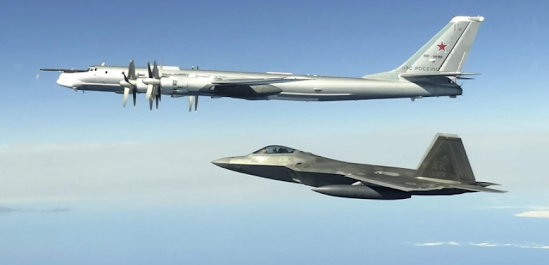International Military - Russia's position when it invaded Ukraine was now precarious after many countries gave support to Ukraine. One of the countries that support Ukraine against Russia is the United States (US).
One of the international media made the article title 'US Military Wants Mach 3 Nuclear Powered Plane to Fight Russia'. The Cold War gave rise to many strange ideas to fight the Iron Curtain Country. The atomic age when nuclear energy seemed to be the ticket to a future with endless possibilities.
For a generation, after 1945 the United States explored all kinds of concepts of nuclear propulsion. Some, such as naval power plants for submarines and ships, proved revolutionary and effective. Others proved possible to develop but impractical to pursue.
Nuclear-powered planes now seem the fanciest of all, but billions of dollars and years of aviation research were sunk into the Aircraft Nuclear Propulsion (ANP) program that pursued the idea before its death.
Between the end of World War II and the dawn of Camelot American engineers figured out how to install reactors in airplanes and make them generate thrust without frying the crew.
American leaders don't know how to pay for it or why they need it. Reporting from page 19fortyfive, today the ANP program is remembered as a gift of the Atomic Age, all that remains is a three-story experimental unit and a giant hangar with six-foot-thick walls.
When cancelled, the program will create flight-ready hardware and airframes for inclusion in the flight test program. However, doubts about the future of manned bombers and worries about accidents cloud an expensive program that is poised for cuts.
After the Kennedy administration canceled the ANP program in early 1961, the program's largest contractor, General Electric, produced a 21-volume report on the project.
In the APEX-910 “Aircraft Nuclear Propulsion Application Study”, paints the future of the atom in Tomorrowland in motion. The report summarizes an astonishing range of research into small and light nuclear engines for everything from seaplanes to rockets and even helicopters.
The interesting concept of the Hunter-Killer aircraft is one that is very large and very fast. It is a "counterforce system capable of destroying enemy strategic weapons such as ICBMs, long-range aircraft and associated bases".
Mission requirements define an aircraft such as a Mach 3 attack submarine, capable of long air surveillance, (penetrating) enemy territory either at sea level or at high altitude and high speed (and carrying) large payloads (50,000 to 100,000 pounds).
Nuclear-powered missiles enjoy the advantages of nuclear propulsion and unmanned operation. The 1954 ACA-8 nuclear-powered reconnaissance drone concept features outstanding durability and no crew harm. These missiles could have been unstoppable and might prove even better than the ICBMs being developed at the time.
The GE report discusses the nuclear ramjet-powered cruise missile in some detail, but does not directly explore the concept. For the last application studied, the sky is literally the limit.
GE engineers sketched an interplanetary spacecraft using liquid hydrogen and 21 reactors to hurl its components from Earth's surface to Mars on a three-week flight. Its nuclear engine will switch from turbojet to ramjet to rocket propulsion during flight. No modern system thinks of such performance.
Looking back half a century to the era of greater belief in nuclear energy, it's quite surprising what they thought. Surely collisions, skirmishes, and carelessness will prevent it all from ending well.
Today's drone designers may look longingly at small nuclear turboprops but can count on a little support for such ideas.

